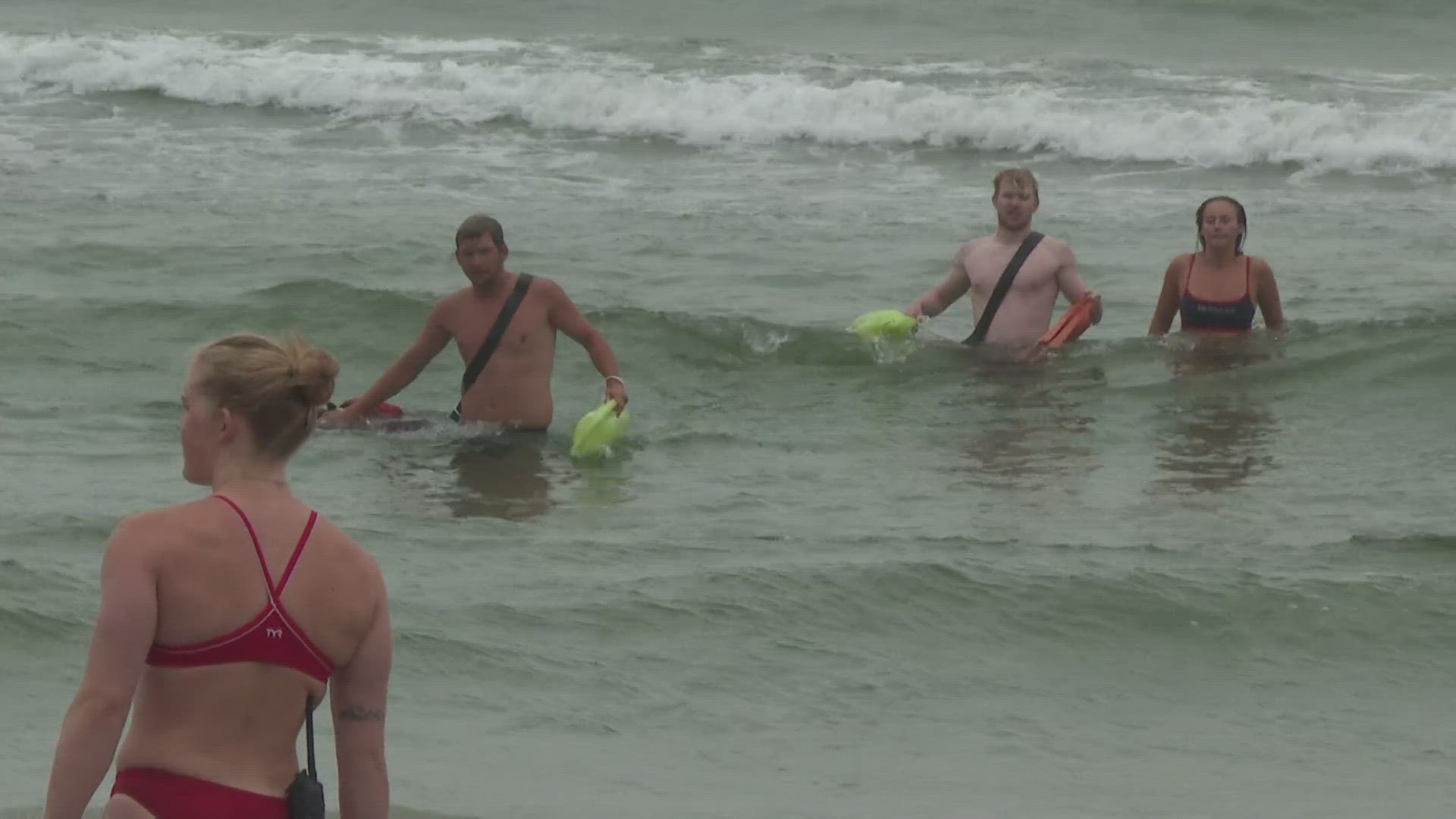SCARBOROUGH, Maine — As you gear up for a relaxing weekend getaway at the beach, it's important to stay informed about potential hazards that could put a damper on your plans.
One of the most significant concerns raised by lifeguards is the threat of rip currents.
These powerful underwater currents can pose a serious danger to swimmers.
Rip currents are narrow channels of fast-moving water that flow away from the shore and into deeper waters. They are often a result of the complex interaction between breaking waves, underwater sandbars, and the natural contours of the coastline.
The powerful force of these currents can catch even experienced swimmers off guard, making it crucial to understand their characteristics and how to identify them.
Identifying rip currents can be easier than you might think. When you're at the beach and observe waves with a flat or calmer section in between, you might be looking at a rip current.
These currents can pull swimmers away from the safety of the shore, making it essential to be cautious and alert during your beach visit.
Lifeguards play a vital role in ensuring beachgoers' safety, and they've been working tirelessly to prevent accidents related to rip currents.
At Old Orchard Beach, lifeguards said they have already conducted more than 20 rescues this past month because of rip current incidents. To avoid putting yourself in harm's way, pay attention to the colored flags set up by lifeguards. These flags are designed to keep the public informed about water conditions and potential risks.
According to Dave Currier, a lifeguard supervisor, rip currents are a common occurrence, and lifeguards are trained extensively to handle such situations.
He emphasizes that recognizing rip currents is a fundamental part of their training, and they are always prepared to respond swiftly and effectively.
Keith Willett, lifeguard captain at OOB, highlighted that a significant majority of their rescues – around 99 percent – are rip current related and emphasized the critical need to understand and respect these currents.
If you find yourself caught in a rip current, it's essential to remain calm and avoid panicking.
Swimming against the current is not only futile but can also exhaust you quickly. Instead, swim parallel to the shore. This strategy will help you escape the current's pull and make your way back to safety.
Before you head into the water, make it a point to check with the lifeguards about the current rip current conditions. Their insights and guidance can provide you with valuable information to ensure a safer beach experience.

